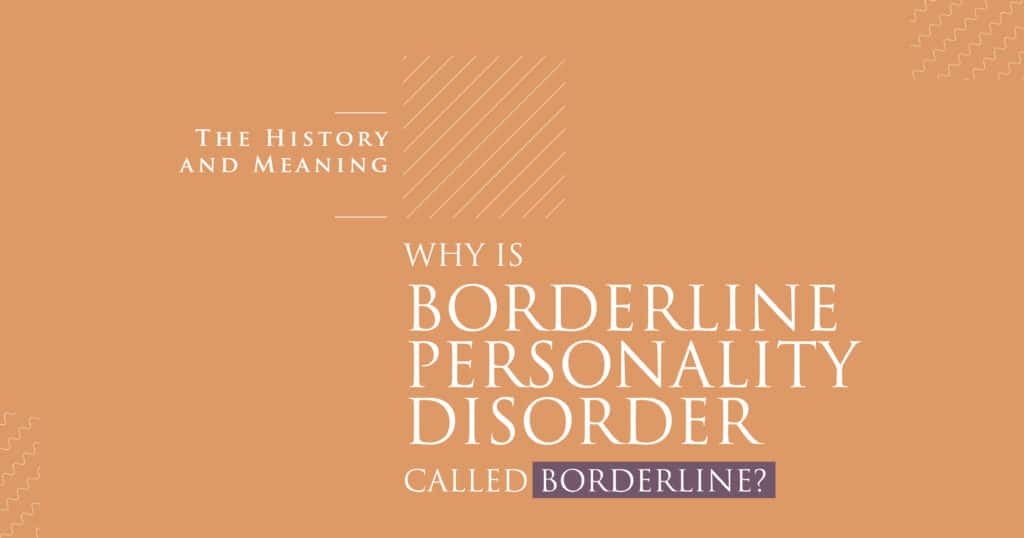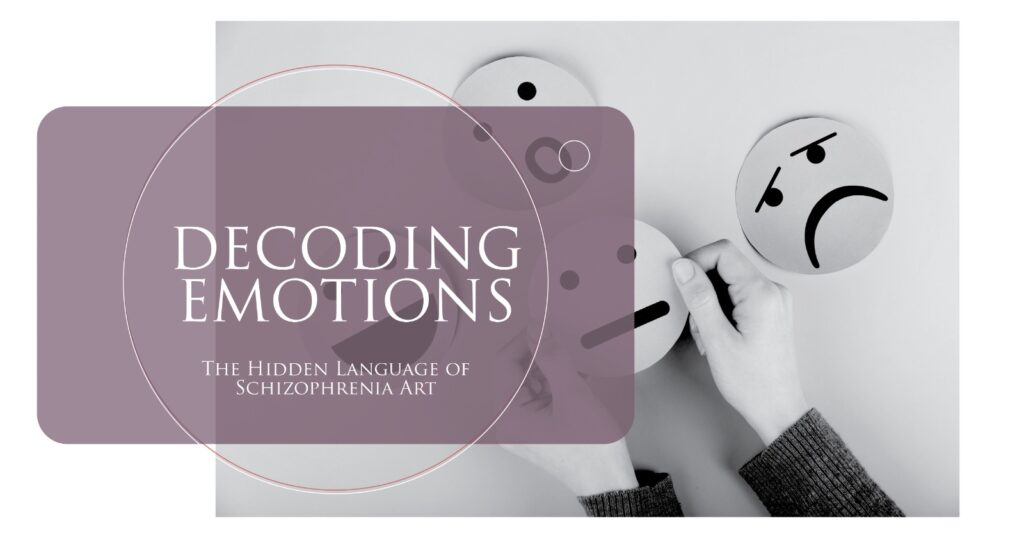Borderline Personality Disorder (BPD) affects approximately 1.6% to 5.9% of the U.S. population, making it more common than schizophrenia. Borderline personality disorder exists as a widespread condition, yet people still widely fail to comprehend and misunderstand this mental health disorder. People who have BPD encounter difficulties managing their emotions while also exhibiting impulsive actions, which deteriorate their interpersonal bonds – a condition referred to as borderline personality disorder that has immense daily consequences.
The question, “Why is borderline personality disorder called borderline?” continues to puzzle many, especially those newly diagnosed or supporting loved ones with BPD. Exploring why it is called borderline personality offers important insight into how psychiatric terminology has evolved – and how much our understanding of mental health has grown. By unpacking the historical and clinical roots of the term, we not only answer lingering questions but also promote greater empathy and clarity around the borderline personality meaning.
Understanding Borderline Personality Disorder
BPD is defined as a mental health condition that profoundly affects the way an individual sees themselves, along with their approach to interpersonal relationships, which changes because of this condition. The condition disrupts emotional management, resulting in both major shifts between moods and spontaneous, undesirable choices alongside consistent fighting with others. The inability to handle emotions properly leads people toward self-injurious behaviors, substance dependence, and an endless sensation of emptiness.
The primary symptoms of borderline personality disorder consist of severe abandonment anxieties along with fluctuating self-perception and multiple disturbed romantic relationships. People with BPD chronically display two distinct traits – they experience disturbances in their sense of self, yet they shift their opinions about other people from excessive admiration to severe devaluation quickly. Self-damaging impulsive behaviors, such as reckless driving, binge eating, or substance abuse, are hallmark features. Co-occurring mental health conditions are common and about 84.5% of people with BPD have at least one other psychiatric diagnosis.
Why Is Borderline Personality Disorder Called “Borderline”?
Psychiatrist Adolph Stern created the term “borderline” in 1938 to characterize patients who presented characteristics between neurotic and psychotic conditions but lacked sufficient manifestations of each diagnosis.
During the 1960s, Otto Kernberg created the definition of borderline personality organization by detailing components of identity diffusion as well as primitive defense mechanisms and unstable interpersonal relationships.The conceptual developments shaped the formal inclusion of BPD in the DSM-III during 1980, which solidified its place amongst psychiatric classifications.
The medical approval of this diagnosis has not stopped experts from challenging its outdated title because they believe it generates negative preconceptions.
San Jose Mental Health
Early Theories Behind the Diagnosis
During the 1930s and 1940s, psychiatry mainly recognized mental illness as existing between psychosis and neurosis. Psychiatric patients showing both extreme anxiety alongside brief periods of disturbed reality failed to fit within the diagnosed categories of neurosis or psychosis.
Adolph Stern’s Original “Borderline” Concept
In 1938, Adolph Stern identified patients presenting features that blended neurotic and psychotic characteristics. He described these patients who needed active treatment beyond standard Psychoanalysis and proposed the term “borderline personality” to define their intermediate condition.
Early Psychoanalytic Expansions
Through his work in the 1940s, Robert Knight presented ego-psychology perspectives that revealed that “borderline” patients had problems with both impulse regulation and perception of reality. Throughout the 1960s, Otto Kernberg outlined “borderline personality organization” through its fundamental aspects, which included the lack of identity along with basic defense strategies such as splitting and inconsistent connection with others.
Proto-Diagnostic Classifications
During the time before BPD gained its official status, the DSM-II (1968) classed these mixed presentations as “cyclothymic personality” or unspecified neuroses because the field emphasized mood lability instead of individual personality disorders.
DSM-III (1980): Formal Recognition
The DSM-III from the American Psychiatric Association introduced BPD as an Axis II disorder, which needed five characteristics from a total of nine, including frantic abandonment avoidance and ongoing emotional voids and temporary paranoid states, for a formal diagnosis. The diagnosis of this mental disorder received formal recognition through this new diagnostic standard, which confirmed its existence within professional psychiatric understanding.
DSM-IV and DSM-5: Stability of Criteria
Minor modifications were made to the criteria in subsequent editions, while DSM-5 maintained the fundamental instability in self-image, affect, and relationships originally defined in DSM-III. Field tests demonstrated the stability of BPD diagnostic criteria since they were originally structured, which verified that core elements of the condition had been properly defined since their inception.
ICD-10: Parallel Terminology
The World Health Organization’s (WHO) ICD-10 features an equivalent diagnosis to “Borderline Personality Disorder” under the label “Emotionally Unstable Personality Disorder, borderline type” (F60.31). This personality disorder category shows symptoms of impulsiveness and unstable emotions, although it does not require psychotic characteristics.
Advances in Treatment and Conceptual Shifts
The late 1980s marked the development of Dialectical Behavior Therapy (DBT) by Marsha Linehan, who redefined BPD to be a regulation problem instead of latent psychosis. DBT achieved successful outcomes regarding self-harm and suicidal behavior, which helped solidify the notion of BPD as an ascribable condition independent from psychotic disorders.
The Modern Meaning of Borderline Personality Disorder
Borderline personality disorder now exists as a severe mental health illness that produces intense emotional suffering, with permanent fluctuations between mood states and personal self-perception and constant relationship disturbances. Modern psychological understanding defines BPD as an emotional dysregulation disorder that experts no longer consider borderline psychotic or uncertain in its diagnosis compared to earlier theories.
People who suffer from BPD must demonstrate five out of nine necessary diagnostic criteria according to the DSM-5 manual.
- Intense fear of abandonment, real or imagined
- Unstable and intense interpersonal relationships
- Distorted self-image or sense of self
- Impulsive behaviors that are self-damaging
- Recurrent suicidal behavior or self-harm
- Severe mood swings
- Chronic feelings of emptiness
- Intense and inappropriate anger
- Temporary, stress-related paranoia or dissociation
San Jose Mental Health
Common Misconceptions About BPD
Borderline Personality Disorder exists within a context of misconceptions and a lack of understanding that results in negative behaviors towards those who have it. The table below outlines some of the most common misconceptions about BPD
| Misconception | Fact |
| People with BPD are manipulative. | BPD behaviors may seem manipulative, but they are often desperate attempts to cope with overwhelming emotions or fear of abandonment. |
| BPD only affects women. | Research shows that BPD affects men too; men are often misdiagnosed with other disorders like PTSD or depression. |
| People with BPD are just too emotional. | BPD is a serious disorder involving dysregulation in how emotions are processed and managed due to neurological and environmental factors. |
| BPD is untreatable. | BPD is highly treatable. DBT, schema therapy, and trauma-informed therapies have shown strong evidence for symptom reduction and improved functioning. |
| They’re always in crisis or causing drama. | People with BPD often feel emotions more intensely, but labeling them as “dramatic” is dismissive and harmful. What looks like drama is often deep psychological pain. |
Why Some Experts Advocate for a Name Change
Since 1938, the medical field has experienced ongoing confusion regarding the definition of the term “borderline” in psychiatry. The majority of modern mental health specialists believe the current name does not match contemporary views about the condition. The term first described those existing between neurosis and psychosis, but now it no longer represents either emotional dysregulation or interpersonal issues, which define the current understanding of the disorder.
Experts argue that the term “borderline personality disorder” is:
- Stigmatizing
- Outdated
- Misleading
Alternative names proposed include:
- Emotion Dysregulation Disorder
- Complex Trauma Disorder
- Emotionally Unstable Personality Disorder (already used in the ICD-10)
Living With Borderline Personality Disorder Today
People diagnosed with borderline personality disorder experience deep emotions during life, but they can continue to hope for their future. Better treatment access alongside strong advocacy and higher public knowledge of BPD has led to substantially improved societal support for individuals with BPD.
The diagnosis of BPD does not confine people to a permanent state. Therapeutic dedication in combination with personal insight and caring assistance from others enables BPD patients to achieve contentment in their daily existence.
Get in Touch With San Jose Mental Health
If you or someone you care about is struggling with symptoms of borderline personality disorder, San Jose Mental Health is here to help. The team provides individualized support, which combines therapies such as individual therapy with DBT-based programs and family counseling with trauma-informed care.
You are among many others who have found that recovery begins with speaking to someone. Contact San Jose Mental Health today to have a private scheduling appointment, which paves the way for emotional stability and wellness.
San Jose Mental Health
FAQs
What does the “borderline” in borderline personality disorder refer to?
Borderline originally described patients who showed traits similar to both neurotic and psychotic disorders. The term now identifies a separate mental health problem that causes problems in emotional management along with relational instability.
How is BPD different from bipolar disorder?
BPD differs from bipolar disorder through emotionally manageable mood changes despite the resemblance of BPD mood instability to bipolar disorder’s mood swings. The three aspects of causes and symptomology, and treatment strategies exhibit major differences between the two conditions.
What are the most common symptoms of BPD?
The following are the most common symptoms of BPD:
- Deep fear of being left alone
- Inconsistent relationships
- Impulsive actions
- Mood fluctuations
- Self-harm tendencies
- Problems in identifying their own personal self
Can borderline personality disorder be treated or cured?
The conditions of BPD prove highly responsive to treatment through recommended therapies such as DBT. Although BPD exists without traditional cures, it remains possible to recover and manage symptoms for the long term.
Is trauma a cause of BPD?
Childhood trauma contributes as a major risk factor that leads to the development of BPD. Trusted individuals who either withheld affection or did not form proper attachments create the conditions through which borderline personality traits form.








